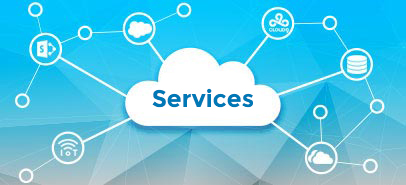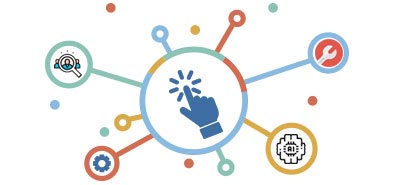Step-by-Step Guide to Creating a Successful Data Strategy Roadmap in 2026
This guide shows you how to build a data strategy roadmap for 2026. It gives you the steps. We will look at planning and checking what you have now. Then, we cover picking the right tools and putting the strategy to work in your company. The main goal? To make your data useful. We want to turn raw data into a real strategic asset (something valuable) that helps your business get results you can measure.
Introduction: Why You Need a Data Strategy Roadmap in 2026
Getting data is easy now. But using that data well? That is the hard part. Without a good plan, all that data is just noise. It can create problems, not growth.
This is why a clear data strategy is so important. A good strategy helps you turn data into an advantage over competitors. It helps with everything from daily work (operational efficiency) to getting ready for AI.
Most companies find it hard to connect their analytics projects to their main business goals. A data strategy roadmap fixes this. Think of it as a compass. It guides your teams. It shows them how to change raw data into actions that get real results. The roadmap makes sure your work has a purpose, your money is spent wisely, and your big decisions are based on good information.
What Is a Data Strategy Roadmap?
A data strategy roadmap is a plan. It is a detailed plan you can act on. It shows how your company will manage and use its data to meet its goals. It connects your big data strategy (the main idea) to the execution (the actual work) needed to make it happen.
So, if the data strategy is the “why,” the roadmap is the “how.” It breaks the big idea down into smaller steps, in the right order. This plan makes a big idea feel real. It clarifies:
- What the business will get (e.g., executive reports, dashboards, AI models).
- When it will be delivered (e.g., milestones tied to specific quarters).
- Why it matters (e.g., how each initiative impacts key business objectives and ROI).
This organized plan makes sure all data projects match the company’s big goals. It stops teams from doing separate, unhelpful work and prevents wasting money.
Transform your scattered data into a unified powerhouse for analytics and AI with ease.
Unify Your DataThe benefits of developing a data strategy
A clear data strategy gives you many good things. These things add real value to your business. It helps your company stop guessing. Instead, you can make smart choices based on facts. A proper data management strategy is the key to making this happen.
- Better Decisions: A strong system for gathering and looking at data helps you make smarter choices. You get to understand your work and your customers better. Using data analytics services lets you turn old and new data into a real advantage.
- More Efficiency: A clear strategy helps you find and remove slow processes. You stop doing the same work twice and make workflows better. This saves a lot of money. It also lets your team focus on important tasks.
- Better Data Control and Safety: A key part of any data strategy is good governance (rules for your data). This makes sure your data is correct, safe, and follows laws like GDPR or HIPAA. This builds trust and lowers risk.
- An Edge Over Others: Companies with a good data management strategy can spot market trends. They can give customers a more personal feel and make new products faster than their rivals.
When Should You Build a Data Strategy Roadmap?
Making a data strategy roadmap is usually the last step of building your main data strategy.
You should make it after you talk to important people (stakeholders) to learn what they need. And after you have decided which projects are most important. This is when you turn big goals into a step-by-step plan. It’s a plan that leaders and teams can actually follow.
You should think about making or updating your roadmap at key moments. For example:
- At the start of a new data initiative to ensure it aligns with broader business goals.
- During major business changes like mergers, market expansions, or new product launches.
- When progress on data projects stalls or teams are drowning in competing priorities.
- When business objectives shift, such as a new mandate to launch an AI use case.
4 Steps to Ensure your Data Strategy Roadmap gets Adopted
A great roadmap is worthless if no one uses it. Success depends on making the plan helpful to everyone, from top leaders to daily teams. Here is how you get everyone to support your data management strategy.
1. Give Executives an Objective Picture of What to Fund
Leaders fund results. They don’t fund technology. To get their support, you must show them the roadmap is a tool for making decisions. It must clearly connect data projects to business value.
Explain every request using ROI (Return on Investment). Show how it affects the company’s main goals (KPIs). This changes the talk from “cost” to “investment.” You should also pick one leader (an executive champion) to keep the talks focused on results, not just tech details. A successful data management strategy really needs this support from the top.
2. Build a Shared Timeline for All Departments
For team managers, the roadmap is about getting work done. It must clearly show what they will get (like reports or dashboards) and when they will get it.
Be open about the order of projects. Explain why one team’s project might come first. Maybe it’s easier to do or gives a faster ROI. This openness builds trust. It helps managers plan their own teams and resources. And don’t forget to celebrate small wins. This shows you are making progress and keeps people motivated. A good data management strategy just makes sure everyone knows the plan.
3. Highlight Staffing and Skill Dependencies
A roadmap fails if you don’t have the right people to do the work. Your plan must list the exact roles and skills needed for each project. This could be a data steward (to check data quality) or a data engineering consulting team (to build data pipelines).
This makes planning for people a normal talk, not an emergency later. You should include these people costs in your ROI numbers. This gives a much more real view of the total investment for your data management strategy.
4. Treat the Roadmap as a Living Operating Plan
A roadmap is not a file you make once and forget. It must change as your business changes. We suggest you review it every quarter (every three months). Use these meetings to check your progress, see if people are using the new tools, and change your priorities if you need to.
In the review, you can report the ROI you have earned. You can also check if projects are still possible and valuable. This keeps your data management strategy useful and matched with company goals. When people ask for new things, the roadmap gives you a clear way to decide. It helps you weigh the options and keep your work focused on results. This is what a strong data management strategy is all about.
Data strategy example
This data analytics strategy roadmap example shows how you can organize projects by quarter. It groups them by “strategic pillars” (big areas of focus).
A useful data strategy roadmap shows your projects on a timeline. The picture above is a sample. It shows a plan broken down by quarters (Q1, Q2, etc.). It covers five key pillars: data architecture, data governance, reporting and analytics, AI, and talent strategy.
For example, look at the data architecture roadmap. It starts with “Databricks lakehouse setup” in Q1. Then it moves to “Data warehouse migration” by Q3. At the same time, the governance pillar is working on a “data catalog” and “data quality checks.”
This visual plan makes it easy for everyone to see how all the projects connect. People know when to expect results. It turns a big idea (the analytics strategy roadmap) into a real plan. This is a great strategy roadmap template for any company.
Build scalable AI/ML platforms to discover better insights with our diversified data engineering services.
Build Your PlatformHow Beyond Key Helps You Succeed
We have over 20 years of experience. Beyond Key is a trusted Microsoft Solutions Partner. We are experts at turning hard data problems into valuable assets. Our certified consultants provide complete data analytics services. This includes everything from strategy and architecture to building the solution and supporting it.
We help companies in more than 30 industries. We help them connect all their different data sources. We build strong platforms that help them grow. We make sure every choice they make is based on clear, trusted information.
Conclusion
For 2026, having a good data strategy is not just an option. It is necessary to survive and grow. A complete data management strategy roadmap gives you a clear path. It is the direction you need to turn raw data into your most valuable asset.
You have to match projects with business goals. You have to get support from leaders. And you have to treat the plan as a living document. If you do this, your company won’t just collect data. You will use data to make better choices, work more efficiently, and get a real edge over your competition. The path to becoming a data-driven company starts with one clear plan. A strong data management strategy is that plan.
Frequently Asked Questions
1. What is the difference between a data strategy and a data strategy roadmap?
A data strategy is the big “why.” It is the main vision for using data to meet business goals. The roadmap is the “how.” It is the step-by-step plan with timelines and projects to make the strategy happen.
2. Who should be involved in creating a data strategy roadmap?
Making a roadmap is a team effort. You need to include key people (stakeholders) from all over the company. This means leaders (for the big picture), managers (for daily work), and tech teams (to see if it’s possible). This makes sure the data management strategy works for everyone.
3. How do you measure the success of a data strategy roadmap?
You measure success with KPIs (Key Performance Indicators) that are linked to your business goals. This can mean things like: Is your data more accurate? Are reports faster? Are you saving money? Are more people using the data tools? And the big one: Are you making more money or are customers happier?
4. What are the biggest risks if we don’t have a data strategy roadmap?
Without a roadmap, you risk wasting time and money. Your data quality will be bad. You might have security problems. You will miss good chances. Your data projects will be a mess and won’t help the business. This wastes money and makes people stop trusting the data.
5. How often should a data strategy roadmap be updated?
The roadmap is a living document. You should check it and update it often, maybe every quarter (three months). You must also look at it again if your business changes in a big way (like a merger or a new product). This keeps the plan useful.












